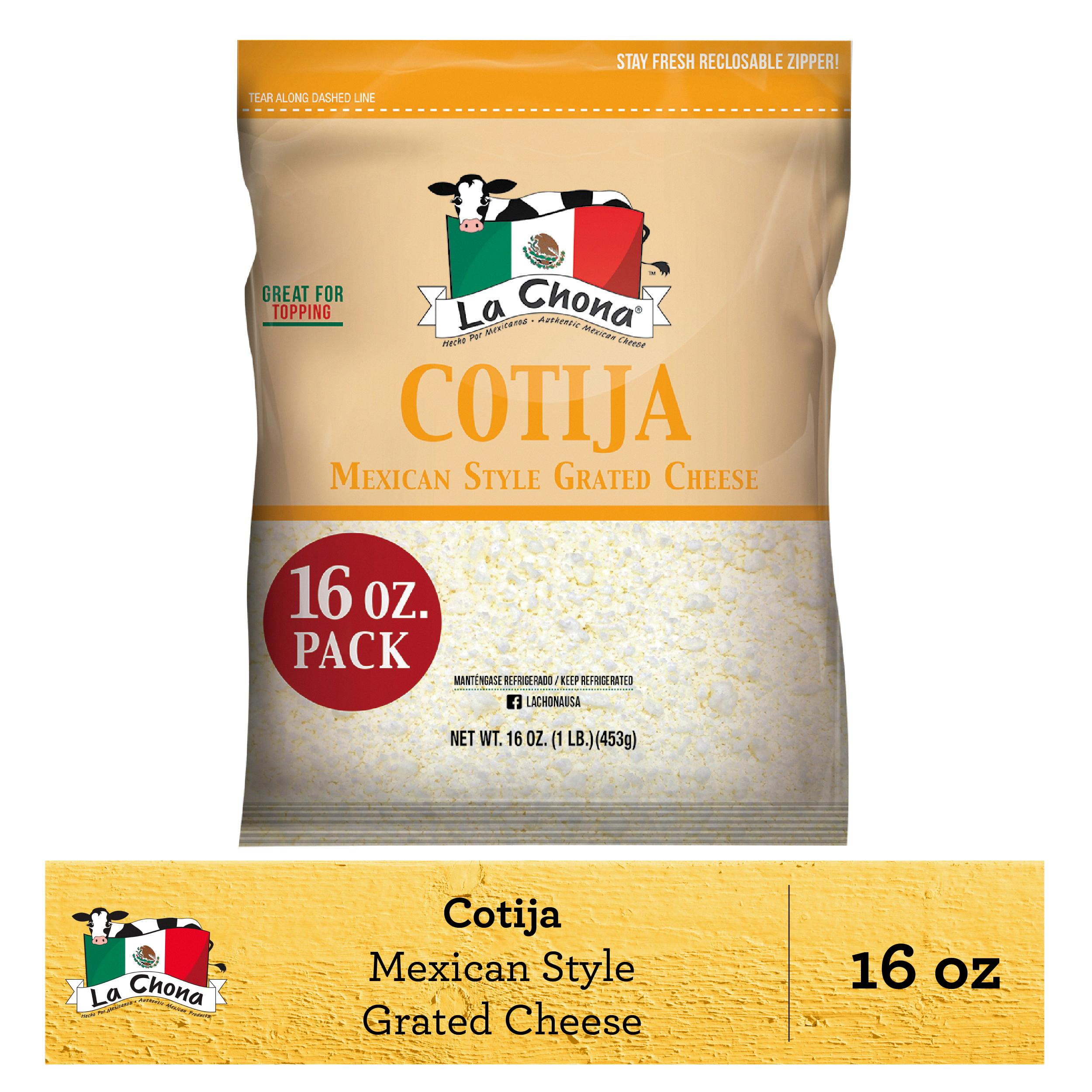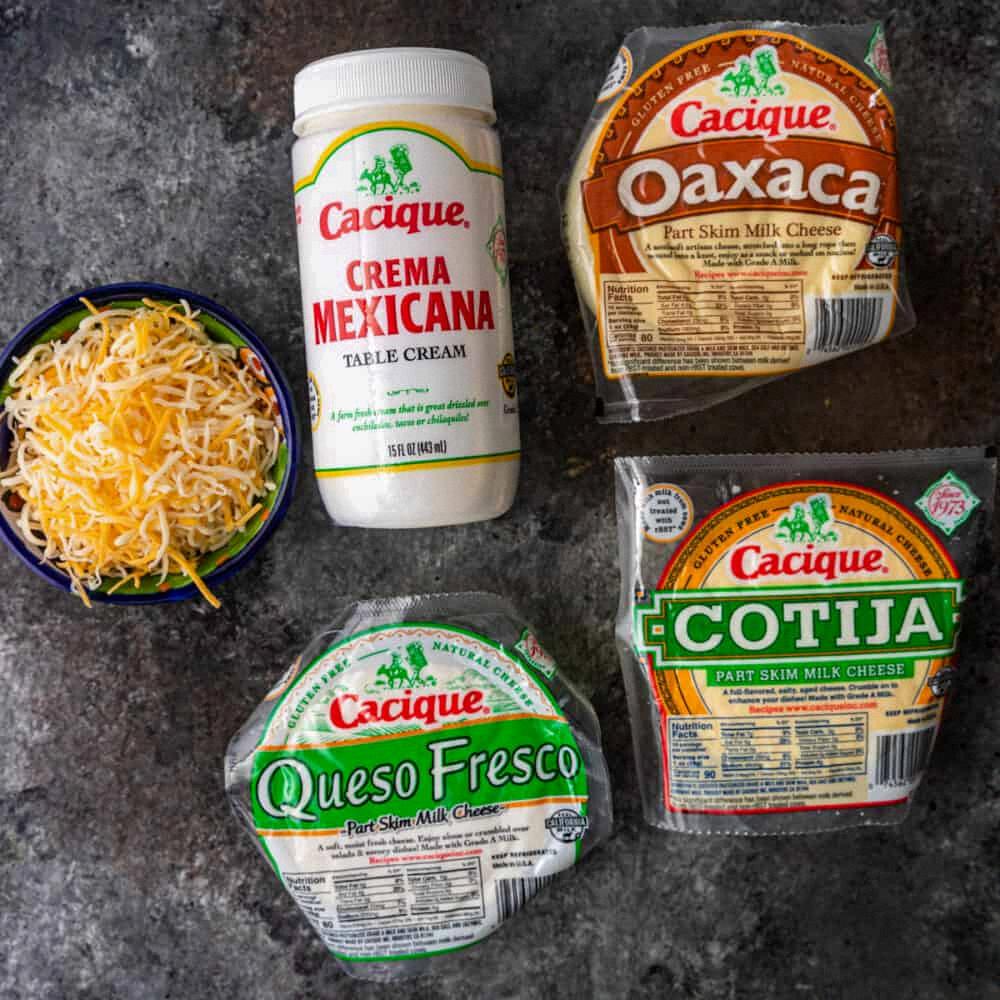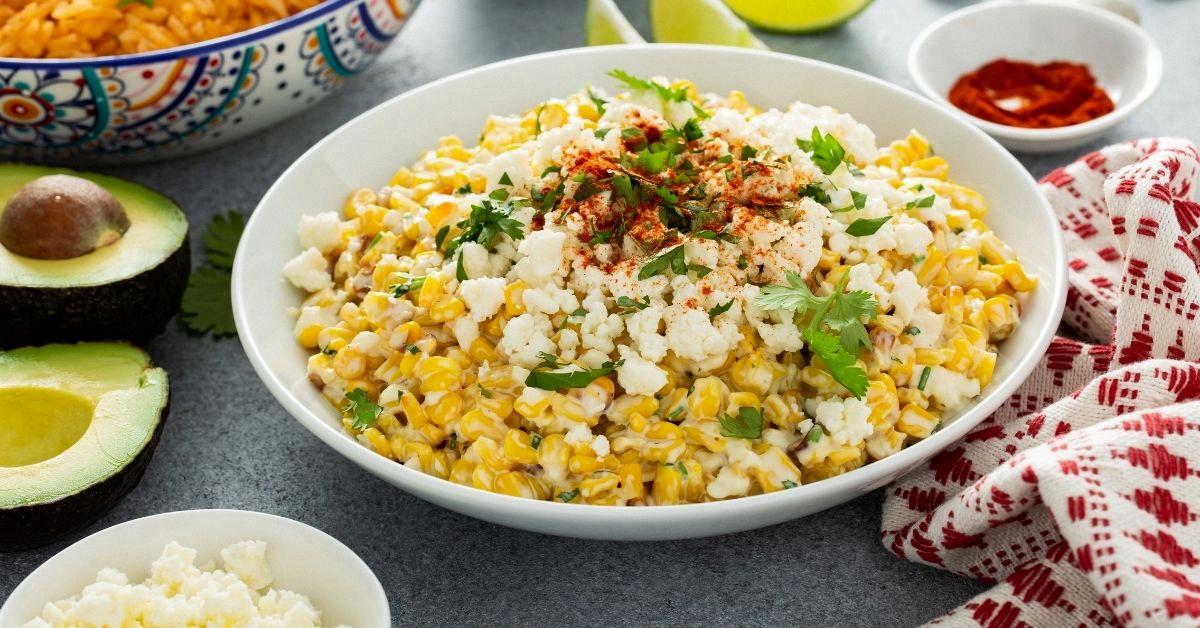Cotija cheese is a popular Mexican cheese that is known for its crumbly texture and salty taste. It is commonly used in dishes like tacos, salads, and enchiladas. However, many people wonder whether cotija cheese melts or not. In this blog post, we will explore the melting properties of cotija cheese and how it can be used in cooking.
Firstly, it is important to note that cotija cheese does not melt like other cheeses such as cheddar or mozzarella. This is because cotija cheese is a hard, aged cheese that has been dried out during the aging process. The drying process removes most of the moisture from the cheese, which makes it difficult to melt.
However, cotija cheese will soften when exposed to heat. This means that it can be used in dishes that require a melted cheese texture, such as quesadillas or nachos. To achieve a melted texture, cotija cheese can be mixed with other melting cheeses like cheddar or Monterey Jack.
Another way to use cotija cheese in a melted form is to crumble it over hot dishes like soups or stews. The heat from the dish will soften the cheese and create a creamy texture. This method is commonly used in Mexican cuisine, where cotija cheese is often used as a topping for dishes like pozole or menudo.
It is important to note that cotija cheese should not be used as a substitute for melting cheeses like mozzarella or provolone. While it can be used to add flavor and texture to dishes, it will not provide the same melting properties as these types of cheeses.
Cotija cheese does not melt like other cheeses, but it can be used in dishes that require a melted cheese texture. It is best used as a topping or mixed with other melting cheeses to create a creamy texture. So next time you are cooking a Mexican dish, consider adding cotija cheese for a delicious and unique flavor.
Comparing the Melting Properties of Queso Fresco and Cotija
Neither queso fresco nor cotija are good melting cheeses. Both of thse cheeses are meant to be crumbled or grated over dishes, rather than melted. However, if you had to choose between the two, queso fresco would be the slightly better option for melting purposes. This is because queso fresco has a slightly higher moisture content than cotija, which can help it soften and spread slightly when heated. However, neither cheese will melt like a traditional melting cheese such as cheddar or mozzarella. If you’re looking for a cheese that will melt and become gooey, you’ll want to choose a different type of cheese altogether.

Source: walmart.com
Why Cotija Cheese Does Not Melt
Cotija cheese is a hard and crumbly cheese that doesn’t melt easily due to its unique texture and aging process. The cheese is typically aged for 100 days to 12 months, which helps dry out the cheese and remove its moisture content. As a result, the cheese becomes hard and crumbly, making it perfect for crumbling or grating over foods. The aging process also causes the cheese to lose its ability to melt, as it becomes less pliable and more resistant to heat. Therefore, when heated, cotija cheese will retain its shape and texture, and will not melt like oher soft or semi-soft cheeses. This quality makes cotija cheese an ideal topping for dishes that require a crumbly texture and a salty flavor, such as salads, tacos, and enchiladas.
Melting Cotija Cheese
Cotija cheese is known for its crumbly texture and salty flavor, but it does not melt like other cheeses. However, if you want to soften and incorporate cotija into a dish, there are a few methods you can try.
1. Grate or crumble the cheese: Cotija cheese is often used as a topping for dishes like tacos or salads. Grating or crumbling the cheese will help it to spread out and soften upon contact with heat.
2. Use a low heat: Cotija cheese will not melt at high temperatures, so it’s important to use a low heat setting. This will alow the cheese to soften without burning or sticking to the pan.
3. Add liquid: Adding a small amount of liquid, such as cream or milk, to the cotija cheese can help to create a smoother texture and make it easier to incorporate into a dish. Be careful not to use too much liquid, as this can cause the cheese to become too runny.
4. Mix with other cheeses: Combining cotija cheese with other melting cheeses, such as cheddar or mozzarella, can help to create a more cohesive and melty texture. However, it’s important to note that cotija cheese will still retain its distinct flavor and texture even when mixed with other cheeses.
While cotija cheese may not melt like other cheeses, there are still ways to soften and incorporate it into dishes. By using a low heat, grating or crumbling the cheese, and adding liquid or other cheeses, you can create a delicious and unique flavor profile for your dishes.
Is Cotija Cheese an Appropriate Substitute for Queso?
Cotija cheese is a type of cheese commonly used for making queso. It is a Mexican cheese that is made from cow’s milk and has a salty and tangy flavor. Cotija cheese is crumbly in texture and is often used as a topping for dishes such as tacos, tostadas, and salads. It is also used as an ingredient in dips, sauces, and spreads. Due to its unique flavor and texture, cotija cheese is a popular choice for adding a distinctive touch to Mexican cuisine.
The Melting Properties of Cotija Cheese
Cotija cheese is known for its crumbly texture and salty flavor. While it can soften with heat, it does not melt well. This means that it is not ideal for recipes that require melted cheese, such as quesadillas or grilled cheese sandwiches. Instead, cotija cheese is best used for crumbling and sprinkling over dishes as a finishing touch. It is commonly used in Mexican cuisine to enhance the flavor of dishes like enchiladas, nachos, tacos, chilaquiles, or posole. So, if you are looking for a cheese that melts well, cotija cheese mght not be the best choice, but it is a great option for adding a delicious finishing touch to your favorite Mexican dishes.

Source: keviniscooking.com
Types of Mexican Cheese That Easily Melt
The Mexican cheese that melts easily is called queso asadero. This cheese is known for its soft and creamy texture, which makes it perfect for melting. It has a mild flavor that won’t overpower the other ingredients in a dish, and it’s commonly used in Mexican cuisine to make dishes such as quesadillas, pizzas, and queso fundido.
Queso asadero is made from cow’s milk and has a low acidity level, which contributes to its ability to melt easily. It’s also a great cheese to use for grilling or frying becase it maintains its shape and texture when heated. Many Mexican markets and specialty cheese shops carry queso asadero, and it can also be found in some grocery stores. if you’re looking for a cheese that melts easily and is perfect for creating delicious Mexican dishes, queso asadero is a great choice.
Does Cotija Cheese Crumble Easily?
Cotija cheese crumbles easily. Cotija cheese is a hard, crumbly cheese that is commonly used in Mexican cuisine. It has a dry, crumbly texture that makes it easy to crumble or grate. Cotija cheese is often used as a topping for salads, tacos, and other dishes where a crumbly texture is desired. It is important to note that cotija cheese does not melt, so it is not an ideal choice for dishes that require a melted cheese such as pizza or grilled cheese sandwiches.
The Benefits of Using Cotija Cheese in Tacos
Cotija cheese is excellent for tacos. This cheese has a crumbly texture and a salty flavor that complements the flavors of tacos perfectly. Its unique taste and consistency make it a popular topping for a variety of taco styles, such as carne asada, al pastor, and fish tacos. Cotija cheese can be sprinkled on top of tacos for added flavor and texture, giving them a delicious and authentic Mexican taste. Additionally, cotija cheese is oten used in combination with other taco toppings, such as cilantro, onions, and lime, to create a well-rounded and flavorful taco experience. So, if you want to enhance the taste of your tacos, cotija cheese is a great choice!
How to Crumble Cotija Cheese
When it comes to crumbling cotija cheese, there are a few techniques that you can utilize. One of the easiest and most effective ways is to place the desired amount of cotija cheese inside a ziplock bag. Seal the bag and use your hands to press on the cheese within the bag until it breaks and crumbles into small pieces. By dong this, you can achieve a consistently crumbled texture that’s perfect for adding to your favorite dishes.
Another advantage of this method is that it helps keep your hands clean, which can be especially helpful if you’re in a hurry and don’t have time for a messy cleanup. Once you’ve crumbled the cotija cheese, you can pour the sprinkles directly from the bag into your dish or recipe, avoiding any extra steps or utensils.
Using a ziplock bag to crumble cotija cheese is a quick, easy, and efficient way to add this delicious ingredient to your meals. Whether you’re making tacos, salads, or any other dish that calls for cotija cheese, this technique will help you achieve the perfect crumbled texture every time.

Source: feelgoodfoodie.net
Is Cotija Cheese the Same as Queso?
Cotija cheese and queso are not the same. Cotija cheese is a hard, crumbly cheese made from cow’s milk that is aged for sveral months, while queso refers to a variety of fresh, mild white cheeses commonly found in Latin American cuisine. Cotija cheese has a salty and tangy flavor, while queso can have a range of flavors depending on the type of cheese and how it is made. Queso fresco is a popular type of queso that is soft and moist, with a mild flavor, while cotija is often used as a topping or garnish for dishes like tacos and salads, adding a sharp, salty kick. So, while both cotija cheese and queso are delicious and versatile ingredients, they are distinct and different from one another.
Is Cotija Cheese Hard or Soft?
Cotija cheese is considered a semi-hard cheese due to its texture. While it is not as firm as some aged hard cheeses, it is not as soft as fresh cheeses like ricotta or feta. Cotija cheese has a crumbly texture similar to parmesan, but it is slightly softer and more pliable. This texture makes it perfect for crumbling or grating over dishes, as it adds a salty, tangy flavor without melting like other cheeses. cotija cheese falls somewhere in the middle of the spectrum between soft and hard cheeses.
Similarities Between Cotija and Queso Fresco
Cotija and queso fresco are both Mexican cheeses, but they do have some differences. Cotija cheese is typically made with whole cow’s milk and is aged, resulting in a crumbly texture and a tangy, salty flavor. It’s often used as a topping for dishes like tacos and salads. Queso fresco, on the other hand, is made with skimmed cow’s milk and is usually not aged, giving it a milder flavor and a softer texture that crumbles easily. While they can both be used in Mexican cuisine, queso fresco is often used as a substitute for feta or ricotta cheese, wile cotija is more commonly used as a substitute for parmesan cheese.
What Type of Cheese is Used for Queso in Mexican Restaurants?
Mexican restaurants commonly use Queso Fresco and Cotija Cheese for their queso dips and toppings. Queso Fresco is a mild, crumbly cheese with a slightly salty taste, while Cotija Cheese is a hard, salty cheese with a crumbly texture. Queso Blanco is another type of cheese that is popularly used as a topping for enchiladas and empanadas. This cheese is soft and creamy with a mild flavor that pairs well with spicy dishes. the types of cheese used in Mexican restaurants for queso vary depending on the recipe and the desired flavor profile.

Source: insanelygoodrecipes.com
Types of Cheese Ideal for Melting in Queso
When it comes to making queso, you want a cheese that will melt smoothly and evenly wthout separating or becoming greasy. Some of the best cheeses for melting in queso include Colby, Havarti, Swiss, Fontina, Monterey Jack, Muenster, Provolone, and Smoked Gouda. Colby is a mild-flavored American cheese that is firm and creamy, perfect for adding a smooth texture to your queso. Havarti is another creamy cheese that melts smoothly and has a mild, buttery flavor. Swiss cheese has a nutty, slightly sweet taste and melts well, giving your queso a smooth and creamy texture. Fontina has a rich, earthy flavor and melts beautifully, creating a creamy and indulgent queso. Monterey Jack is a popular choice for queso due to its mild taste and excellent melting properties. Muenster is another cheese that melts well and has a tangy, slightly sweet flavor that goes well with spicy queso. Provolone has a sharp, buttery flavor and is perfect for adding a rich, tangy taste to your queso. Smoked Gouda has a unique smoky flavor that adds depth and complexity to your queso. These cheeses are all excellent choices for melting in queso and will help you create a creamy, delicious dip that everyone will love.
What Type of Melted Cheese Do Mexican Restaurants Use?
Mexican restaurants commonly use Monterey Jack cheese as a melted cheese in ther dishes. This cheese has a smooth texture and a mild flavor, which pairs well with the bold spices and flavors found in Mexican cuisine. It’s often used in dishes such as quesadillas, enchiladas, and nachos. Sometimes, you may find variations of Monterey Jack cheese that include added ingredients like jalapenos or pimientos to add a little extra flavor and kick to the dish. Monterey Jack cheese is a popular choice for melted cheese in Mexican restaurants due to its creamy texture and ability to complement the flavors of the dish.
Conclusion
Cotija cheese does not melt due to its firm and compact texture, which makes it perfect for grating or crumbling over dishes. Unlike other cheeses like cheddar or mozzarella, cotija cheese will not turn gooey or stringy when heated. Instead, it will soften slightly, but maintain its shape and texture. This is because cotija cheese is traditionally aged for several months, which helps to dry out the cheese and prevent it from melting. So, if you’re looing for a cheese that adds a crumbly texture and salty flavor to your Mexican dishes, cotija cheese is the perfect choice. Just keep in mind that it won’t melt like other cheeses, so it’s best used as a topping or garnish rather than a melting ingredient.
